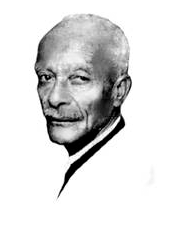Mestre Pastinha, a father of Capoeira Angola
The son of Jose Senor Pastinha and Eugenia Maria de Carvalho, Vicente Ferreira Pastinha was born on April 5, 1889 in Salvador-BA Brazil. Mestre Pastinha was exposed to Capoeira at the age of 8 by an African name Benedito. An older and stronger boy from Pastinha’s neighborhood would beat up Pastinha. One day Benedito saw the aggression then told Pastinha to stop by his house and he would teach him a few things. The next encounter with the older boy, Pastinha defeated him so quickly that the boy became his admirer. Mestre Pastinha had a happy and modest childhood. In the mornings, he would take art classe at the Liceu de Artes e Oficio school where he learned to paint; during the afternoons he would play with kites and practice Capoeira. He continued his training with Benedito for three more years. Later he joined a sailor school by his father wish, which would not support his Capoeira practice. At the school, he would teach capoeira to his friends. At the age of 21, he left the sailor school to become a professional painter. During the spare time he would practice Capoeira secretly since it was still illegal at that time.
